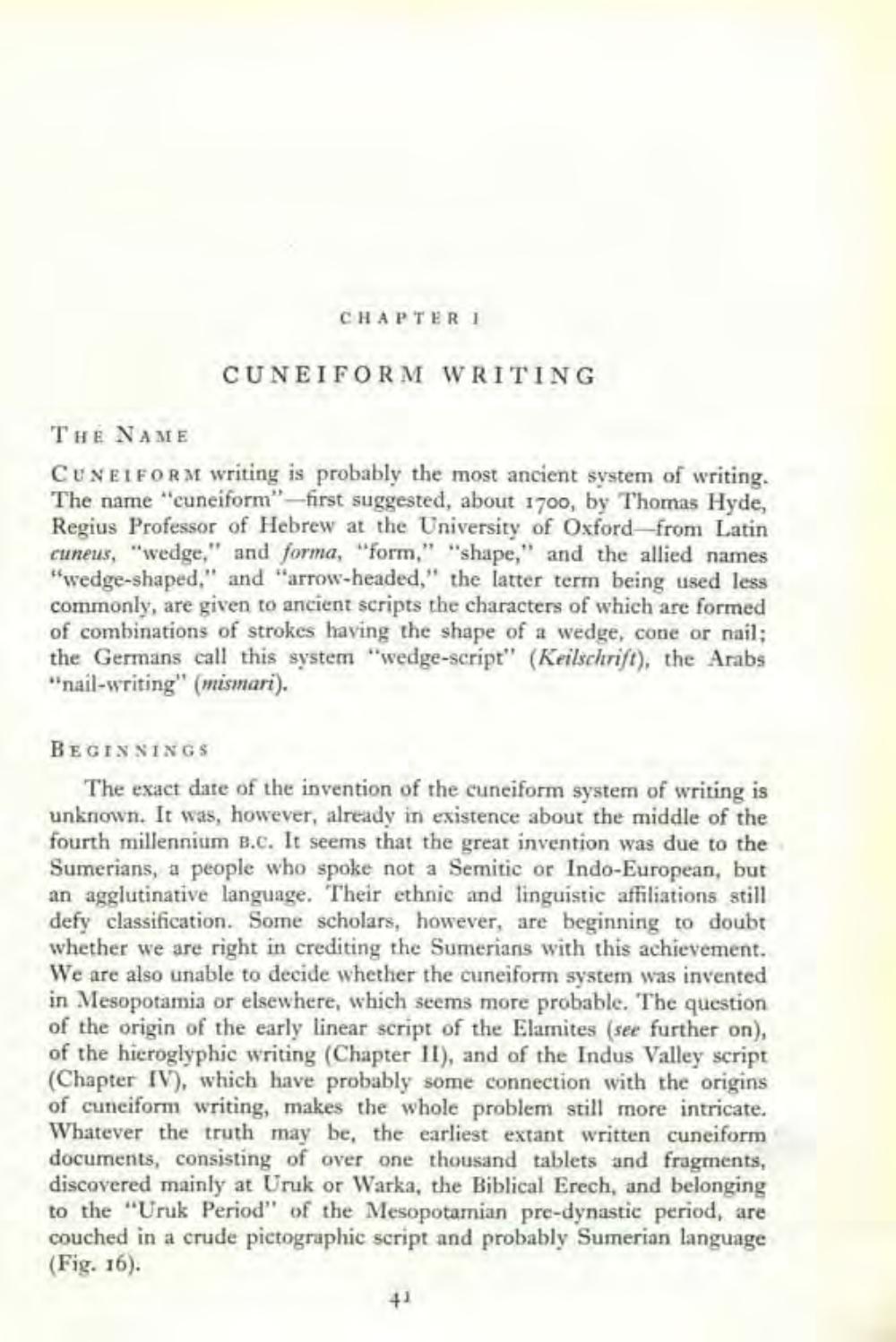________________
CHAPTER I
CUNEIFORM WRITING
THE NAME
CUNEIFORM writing is probably the most ancient system of writing. The name "cuneiform"-first suggested, about 1700, by Thomas Hyde, Regius Professor of Hebrew at the University of Oxford-from Latin cuneus, "wedge," and forma, "form," "shape," and the allied names "wedge-shaped," and "arrow-headed," the latter term being used less commonly, are given to ancient scripts the characters of which are formed of combinations of strokes having the shape of a wedge, cone or nail; the Germans call this system "wedge-script" (Keilschrift), the Arabs "nail-writing" (mismari).
BEGINNINGS
The exact date of the invention of the cuneiform system of writing is unknown. It was, however, already in existence about the middle of the fourth millennium B.C. It seems that the great invention was due to the Sumerians, a people who spoke not a Semitic or Indo-European, but an agglutinative language. Their ethnic and linguistic affiliations still defy classification. Some scholars, however, are beginning to doubt whether we are right in crediting the Sumerians with this achievement. We are also unable to decide whether the cuneiform system was invented in Mesopotamia or elsewhere, which seems more probable. The question of the origin of the early linear script of the Elamites (see further on), of the hieroglyphic writing (Chapter II), and of the Indus Valley script (Chapter IV), which have probably some connection with the origins of cuneiform writing, makes the whole problem still more intricate. Whatever the truth may be, the earliest extant written cuneiform documents, consisting of over one thousand tablets and fragments, discovered mainly at Uruk or Warka, the Biblical Erech, and belonging to the "Uruk Period" of the Mesopotamian pre-dynastic period, are couched in a crude pictographic script and probably Sumerian language (Fig. 16).




